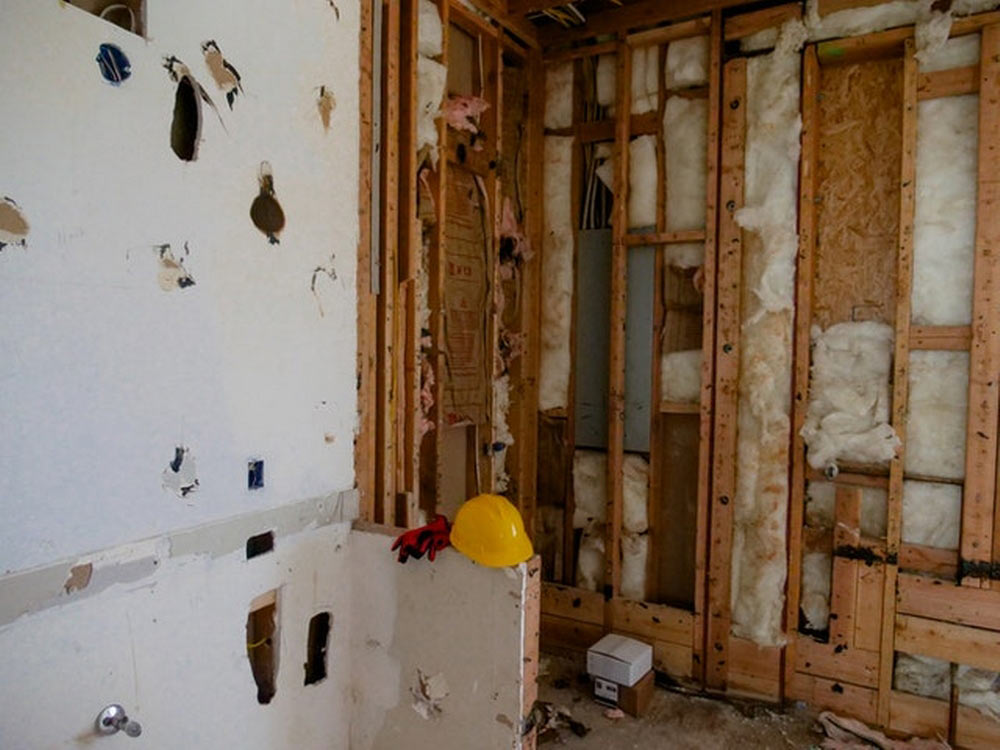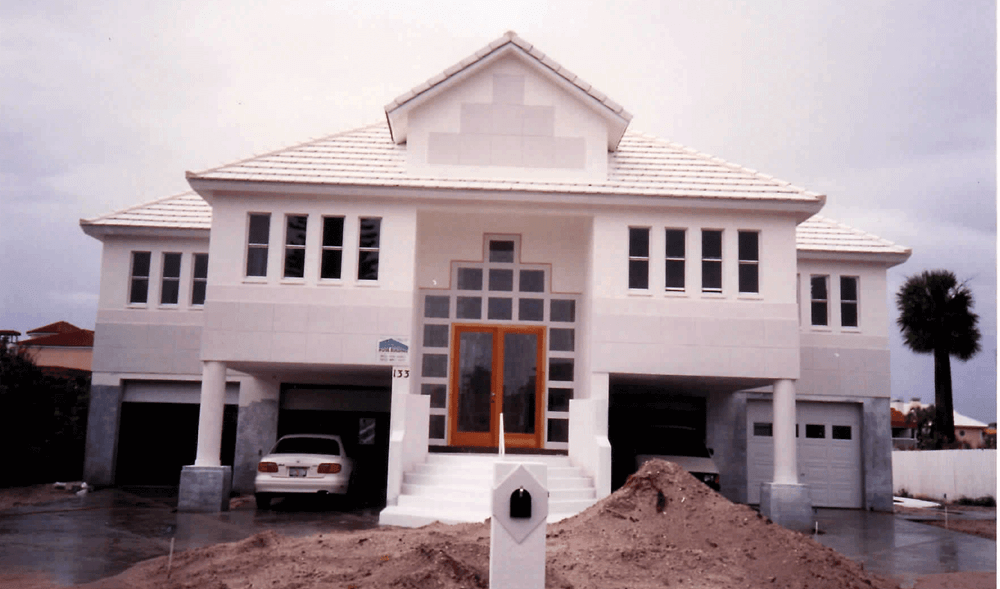By using our website, you agree to the use of cookies as described in our Cookie Policy
a
Rss Feed
Can termite damage be fixed?
Can termite damage be fixed?

What do you call a tiny, pale insect that you can hardly see living in your house? Costly. Termites are the most expensive roommates you can have. The bane of many a homeowner, it is hard to believe that something so minuscule could be such a menace. But they live in large colonies and, if left unchecked, can ruin your home beyond repair. However, some signs indicate you may have a termite infestation. By acting quickly, you can avoid reaching the point of no return and solve the issue by contacting the exterminator and scheduling a repair session with your contractors. The question is, can termite damage be fixed once it is discovered? Let's take a look at what you can do once you find these unwanted guests in your cozy abode.
To Fix a Problem, One Must First Discover It
Sounds almost philosophical, doesn't it? The problem with termites is that they are rather sneaky. There are two main types, subterranean and airborne (further classified into wet-wood and dry-wood termites). The former type can gain access from below, launching a subterranean attack on the wooden features of a house. Formosan termites are one such subterranean species notorious for being difficult to eradicate. What's worse, they build huge colonies, and as such, it is extremely difficult to get rid of them all. Other types of termites can chomp through wood without making a sound so that everything seems to be in perfect order from the outside. Here are some of the tell-tale signs that can help you identify a potential termite problem:
- Frass- It is no coincidence that this is first on the list. Simply put, this is what's left of the parts of the house the termites have already eaten! It looks, more or less, like sawdust. If you find tiny wood beads, react immediately.
- Mud tunnels
- Water damage
- Wood that sounds hollow- you can check this yourself periodically by tapping on it;
- Buckling ceilings/walls- this could indicate that the colony has been there for a while, and you need to react fast, not to reach a point where you cannot fix the termite damage;
- Sometimes it is simple; you can find discarded wings or individual termites if you have a good eye;
If you see any of these signs, do not place them in your 'to-do list'. You know, the one we all have. The one that contains all the potential problems we postpone until they become full-blown disasters. If you have the Formosan species renting out a room in your wooden framework, they can cause irreparable damages within years. Did we mention that this stealthy subterranean species lives in the South, mainly in coastal areas? Even if you have a less ravenous type living in the woodwork, reacting quickly is the key to fixing termite damage. Routine inspections can limit the damage. As with most things, if caught early, there will be no need for any repairs. If they slip by you, then be prepared to fork out a hefty sum because this species is highly resistant to normal eradication.

Solve the Cause, Not the Symptoms
Homeowners are faced with two main issues. They need to get rid of the termites and repair the damage they have caused. The first logical step is to eradicate the pests. It would be counterproductive to repair the damage first, as all you are essentially doing is adding more fuel to the fire. Or, in this case, adding more wood for the termites to eat. Do not fret; there are routine things you can do. By organizing yearly perimeter soil treatments and having the interior topically sprayed, you can help combat these critters. If all else fails, there is one sure-fire way to eradicate termites that have already made your home their home. Tenting. Once tented, everything under the tent will perish. Just keep in mind, although this solves the current problem, you still need to remain vigilant. As you can imagine, once it is safe for you to move back into your house, it is safe for the termites as well. Deal with the termites first, and once you know your home is pest-free, you can set your sights on repairing what has been damaged.
We often talk about the hidden costs of buying a new house. One that rarely occurs to us is the not-so-friendly unwanted pets lurking in the frames. Rarely is it the owner's fault. Just like the buyer, they are not aware of their presence. If you are planning a move, there are two experts you need by your side. Professional movers you can get by calling City Movers will help with the relocation process, while another professional should carry out a termite inspection. You need to think ahead to avoid costs; it's the safest bet.
Two Solutions
As always, we have two paths ahead of us. Philosophy seems to be in our blood; we can't avoid it today! As expected, one is more expensive than the other. Still, before we look at these two answers, one more question needs to be addressed. When asking yourself if termite damage can be fixed, the reply depends on who will be doing the fixing. The type of damage termites can exact on your unsuspecting home is not easy to repair. DIY can help with a few aesthetical aspects. For example, if the paint is blistered, it could be the perfect opportunity to give your property a fresh lick of paint and boost the resale value at the same time. However, the main repair work should be left to the pros.

The First path
The first option is to remove the damaged sections of wood and replace them. Yes, this is the pricier choice. It is also a rather complex process, as you need to think about maintaining your home's structural integrity. For example, proper maintenance of your roof is essential. Roofs, however, contain cellulose, something considered a bit of a delicacy when it comes to fine termite dining. Unless you are sure you know what you are doing, do you really want to tackle such a task on your own, fixing roofs and other vast sections of the house? It is best to hire experienced workers who can get the job done correctly.
The Second Path
The second option is to add more wood that will provide support to the damaged areas. You can do a lot of structural repairs and non-structural repairs in this manner. It is less costly, and if you have the needed experience, you can perform some of it independently. Still, we strongly urge eliciting the help of professionals. Look around, contact a contractor and ask for some quotes and find the best solution for you.
Fixing Problems on the fly
We all know it is better to prevent a problem than to solve it. The surefire way to fix termite damage is through early detection. This can be complicated if you are doing it in your current home, but it gets even trickier if we talk about your future home. It gets even worse if you are trying to handle a short notice move. Termites are the least of your worries in that scenario. Just like the name suggests, a short notice move entails a shortage of time while maintaining the complexities of a regular relocation. When swift relocation is necessary, good organization is critical. One thing that can slip your mind in the madness that is moving on short notice is your new home itself. Add hiring a termite inspector to your list and ensure that your new house is genuinely free of other tenants.

Can Termite Damage Be Fixed? It Depends on You!
There is a good reason that the 't word' can induce fear and panic in many homeowners. Even though these bugs can cause many problems, that's half the battle won right there if you are aware of them. A lot of people are not aware of what they can do. We do that often, don't we? When something is small, we tend to label it as insignificant. When the small starts to multiply and pile up, a big problem starts looming over the horizon. This is beginning to sound philosophical again. Let's get back to the issue at hand. Can termite damage be fixed? It can, and it will be, if you are diligent in your duties as a responsible homeowner and keep a watchful eye over your castle.
‹ Back






.png)

Comments